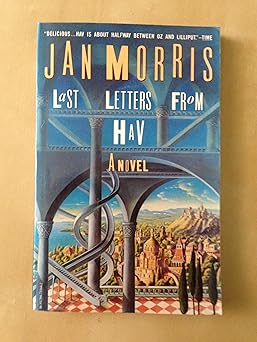
Welcome, dear readers, to a journey into a place unlike any you’ve likely encountered before. It's a city that exists not on any map, but within the boundless realms of imagination. This place, called Hav, is fading. It’s a city losing its vibrancy, its people, and its purpose. Think of a cherished photograph slowly turning yellowed and brittle, that's Hav. It's a place steeped in a unique history, touched by the echoes of old Russia, where a community of Russian expatriates once thrived. You can almost picture them, can’t you? People seeking refuge, finding a strange kind of belonging in a place far from home. There's a palpable sense of loss throughout the narrative, a feeling that something precious is slipping away. The details are fascinating: a strange population called the Kretevs, who are described as somewhat primitive, and the incredible Roof Race, a competition held on the rooftops of the city. Imagine people scaling buildings, navigating narrow pathways, the thrill of competition mixed with the beauty of the city spread out below. It’s a spectacle, a symbol of the energy that still flickers within Hav, even as it declines. I remember once, I visited my grandmother's attic, filled with forgotten trinkets and photographs. It was like stepping back in time, experiencing the echoes of lives lived long ago. This city feels much like that—a treasure trove of memories and experiences, slowly fading but still holding a powerful allure. Literary giants, too, have found solace within Hav's walls—names like Marco Polo and Sigmund Freud, drawn to its mysterious atmosphere and the unique perspectives it offers. These aren’t just names dropped to impress; they represent the power of Hav to inspire thought, creativity, and introspection. It’s a city where stories are born and where the boundaries between reality and imagination blur.
The narrative weaves together a series of vignettes, glimpses into the lives of Hav’s inhabitants and the events that shape its fate. It’s not a straightforward story with a clear beginning, middle, and end. Instead, it’s more like a collection of snapshots, each one offering a different perspective on this extraordinary place. We encounter characters from all walks of life – some eccentric, some melancholic, all caught up in the city’s slow decline. Their stories intertwine, creating a rich tapestry of human experience, even if it is set in a wholly unusual environment. The Kretevs, in particular, are compelling figures. Their unusual nature and their relationship to the city add another layer of complexity to the narrative. They seem to represent a primal force, a connection to something older and deeper than the city's more civilized aspects. There's a sense of sadness about the whole situation—the knowledge that this unique place, with all its quirks and inhabitants, is destined to disappear. It’s a reminder of the impermanence of all things, even the most beautiful and cherished places. This feeling resonated deeply with me; I recall a beloved garden I knew as a child, slowly overtaken by nature, a poignant reminder that time continues regardless of our affections.
Ultimately, this is a book about memory, imagination, and the power of place. It's an exploration of what it means to belong, to lose, and to remember. It's not a book that will offer easy answers or a tidy resolution. Instead, it invites you to wander through the streets of Hav, to meet its inhabitants, and to ponder the mysteries of its existence. It's a journey of discovery, both for the characters within the story and for the reader themselves. It is a place that lingers in the mind long after the final page is turned, a reminder of the extraordinary power of the human imagination and the enduring beauty of a world that exists only within our minds. It's a place you might not fully understand, but a place you'll undoubtedly feel.
Rating: 5.0 / 5.0
This book felt like stepping into a dream, a place both familiar and utterly strange. It tells of a city fading away, a place filled with people and stories that are slowly disappearing. It's a little sad, like remembering something precious that you know you can’t quite hold onto. The descriptions are beautiful and intriguing, painting a picture of a unique place and the people who live there. It's not a fast-paced story; instead, it offers glimpses into different lives and moments in time. Some parts felt a bit confusing, like trying to piece together a puzzle with missing pieces. However, it's a book that stays with you, making you think about memory and imagination. It’s a gentle experience, one that might not be for everyone, but if you’re looking for something different and thoughtful, it’s worth exploring. It earns a solid rating because of its ability to evoke a feeling and spark the imagination.